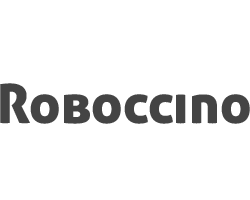Unlocking Efficiency: A Comprehensive Guide to the Cushion Filling System for Global Buyers
In today’s fast-paced global market, efficiency is paramount for businesses aiming to stay competitive, and the Cushion Filling System emerges as a pivotal solution. This comprehensive guide is designed to unlock the potential of this innovative system for buyers worldwide, offering insights into its operation, advantages, and application.
By understanding the intricacies of the Cushion Filling System, decision-makers can streamline their production processes, reduce waste, and enhance product quality. This blog will delve into the various types of cushion filling technologies available, key considerations for implementation, and best practices to optimize efficiency.
Whether you are a manufacturer, supplier, or entrepreneur seeking to enhance your product offerings, this guide will equip you with the knowledge needed to make informed decisions and leverage the benefits of the Cushion Filling System effectively.
Understanding the Cushion Filling System: Key Components and Their Roles
The cushion filling system is an essential component in creating comfortable and durable seating solutions. Understanding its key components can greatly enhance product quality and customer satisfaction. At the heart of the system are the filling materials such as foam, fiberfill, and gel, each playing a crucial role in determining the firmness, longevity, and overall comfort of the cushion. By selecting the right combination, buyers can achieve the desired feel that meets their market demands.
**Tip:** Always test different materials to find the perfect balance between comfort and support. Consider customer feedback to fine-tune your selection, ensuring you’re meeting the preferences of your target audience.
Another critical aspect to consider is the construction of the cushion. The design of the cushion cover, stitching methods, and the incorporation of additional features like zippers for easy cleaning can influence both aesthetic appeal and practicality. Opting for high-quality fabrics that complement the filling can prevent wear and tear, extending the life of the cushion.
**Tip:** Investing in durable and easy-to-clean materials can lead to better customer retention and satisfaction. Remember, functionality paired with style attracts more buyers in a competitive market.
Unlocking Efficiency: A Comprehensive Guide to the Cushion Filling System for Global Buyers
| Component | Description | Material | Role in Cushion Filling | Usage/Application |
|---|---|---|---|---|
| Polyester Fiber | Soft and lightweight filling material | Synthetic | Provides comfort and warmth | Used in cushions, pillows, and bedding |
| Memory Foam | Viscoelastic material that conforms to body shape | Polyurethane | Relieves pressure points and supports spine alignment | Ideal for mattresses and orthopedic cushions |
| Latex Foam | Natural or synthetic rubber foam that is resilient | Natural/Synthetic Rubber | Offers bounce, durability, and breathability | Commonly used in high-end pillows and mattresses |
| Hollow Fiber | Fibers that are tubular in structure | Polyester | Provides loftiness while remaining lightweight | Used in cushions and bedding for added comfort |
| Gel Infused Foam | Foam infused with gel for improved cooling | Polyurethane with Gel | Regulates temperature and provides comfort | Great for pillows and mattresses, especially in warmer climates |
Exploring Market Trends: Demand for Cushion Fillings in Global Industries
The global cushion filling market is undergoing significant changes, with increasing demand across various industries. According to market projections, the heated pad market is expected to grow from $138.07 million in 2025 to $222.06 million by 2033, reflecting a robust compound annual growth rate of 6.12%. This growth indicates a rising awareness among consumers regarding the benefits of cushion fillings, particularly in enhancing comfort and functionality.
When navigating this evolving market, buyers should consider several key tips. Firstly, understanding the specific needs of your target demographic is crucial. Tailoring products to meet varying preferences can significantly influence purchasing decisions. Secondly, staying updated on industry trends is essential, as innovations in materials and sustainable practices are becoming increasingly vital for market competitiveness.
Additionally, establishing strong relationships with suppliers can lead to better quality assurance and more favorable terms. As the demand for high-quality cushion fillings continues to rise, fostering collaborations will ensure access to the latest technologies and materials, ultimately benefiting end-users.
Comparative Analysis: Types of Cushion Fillings and Their Performance Metrics
When it comes to selecting the ideal cushion filling for various applications, understanding the performance metrics of different types is crucial for global buyers. The most common types of cushion fillings include polyester fiber, foam, and down. Each offers unique properties that cater to specific needs. For example, polyester fiber is valued for its resilience and affordability, making it a go-to option for budget-friendly cushioning solutions. In contrast, foam, especially high-density varieties, provides superior support and durability, making it suitable for high-traffic environments.
Another popular choice is down filling, known for its luxurious feel and excellent insulation properties. However, it may require more upkeep and is often higher in cost. In terms of performance metrics, it's essential to consider factors such as durability, comfort, and maintenance ease. By conducting a comparative analysis of these cushioning materials, buyers can make informed decisions that align with their functional requirements and budget constraints, ultimately unlocking greater efficiency in their purchasing processes.
Efficiency Optimization Strategies: Maximizing Production with Advanced Cushion Systems
 In the competitive landscape of manufacturing, optimizing efficiency is paramount, especially in the cushion filling industry. According to a recent report by Allied Market Research, the global cushion filling market is projected to reach $4.2 billion by 2025, driven by the increasing demand for comfort in furniture and bedding products. Advanced cushion systems play a crucial role in achieving streamlined production, reducing waste, and improving overall product quality. By utilizing modern filling technologies, manufacturers can increase their throughput by up to 30%, thereby driving down costs and enhancing profitability.
In the competitive landscape of manufacturing, optimizing efficiency is paramount, especially in the cushion filling industry. According to a recent report by Allied Market Research, the global cushion filling market is projected to reach $4.2 billion by 2025, driven by the increasing demand for comfort in furniture and bedding products. Advanced cushion systems play a crucial role in achieving streamlined production, reducing waste, and improving overall product quality. By utilizing modern filling technologies, manufacturers can increase their throughput by up to 30%, thereby driving down costs and enhancing profitability.
Implementing efficiency optimization strategies can further transform production processes. For instance, the integration of automated filling systems can lower labor costs by approximately 15% while increasing consistency in product outcomes. Additionally, using predictive maintenance techniques helps in minimizing downtime, with a reported reduction of up to 25% in machinery failures. As the demand for innovative cushioning solutions rises, investing in advanced systems not only supports operational efficiency but also positions companies to better compete in a rapidly evolving marketplace.
Cost-Effectiveness in Cushioning: Analyzing Material and Labor Expenses Across Regions
In today's global market, understanding the cost-effectiveness of cushioning materials is crucial for buyers looking to optimize their supply chains. A recent report by Smithers Pira highlights that labor costs in Asia are approximately 30% lower than in North America, which can significantly influence the overall expenditure on cushion filling systems. For instance, while polyethylene foam remains a popular choice for its lightweight properties, varying labor expenses across regions can make a notable impact on the total investment required. Buyers in regions with higher labor costs must consider alternative materials that provide a similar level of protection without breaking the bank.
Additionally, material expenses can vary significantly depending on geographic location and market demand. The global cushioning market is projected to grow by 5.1% annually, according to a report by Grand View Research, emphasizing that sourcing strategies must be adaptable to these shifts. For instance, the cost of sustainable materials has seen substantial investment, particularly in Europe, where consumers increasingly demand eco-friendly options. This trend presents a dual opportunity: buyers can capitalize on lower material costs while appealing to a growing market segment that values sustainability. Understanding these nuanced dynamics is essential for global buyers seeking to enhance their efficiency while managing costs effectively.

